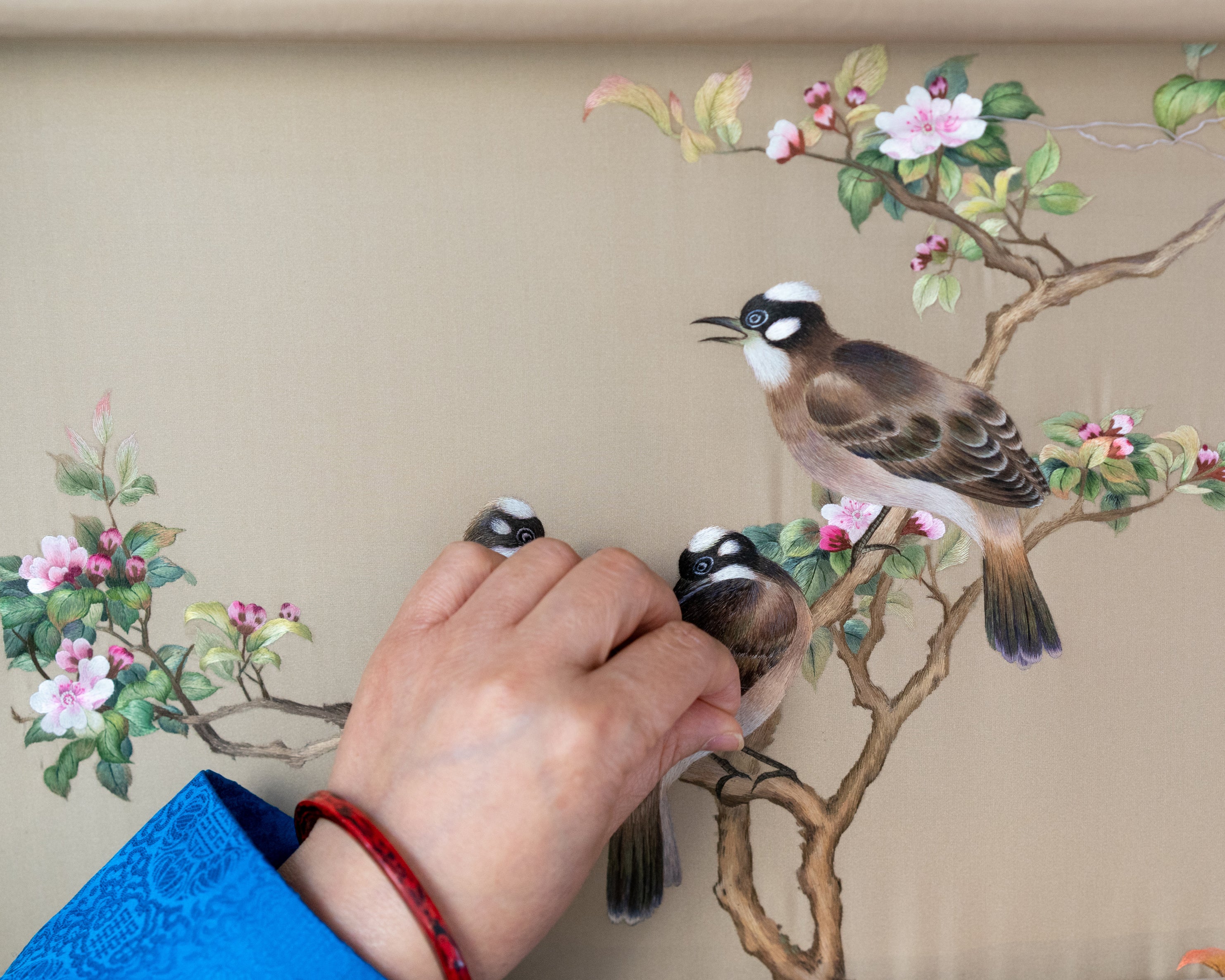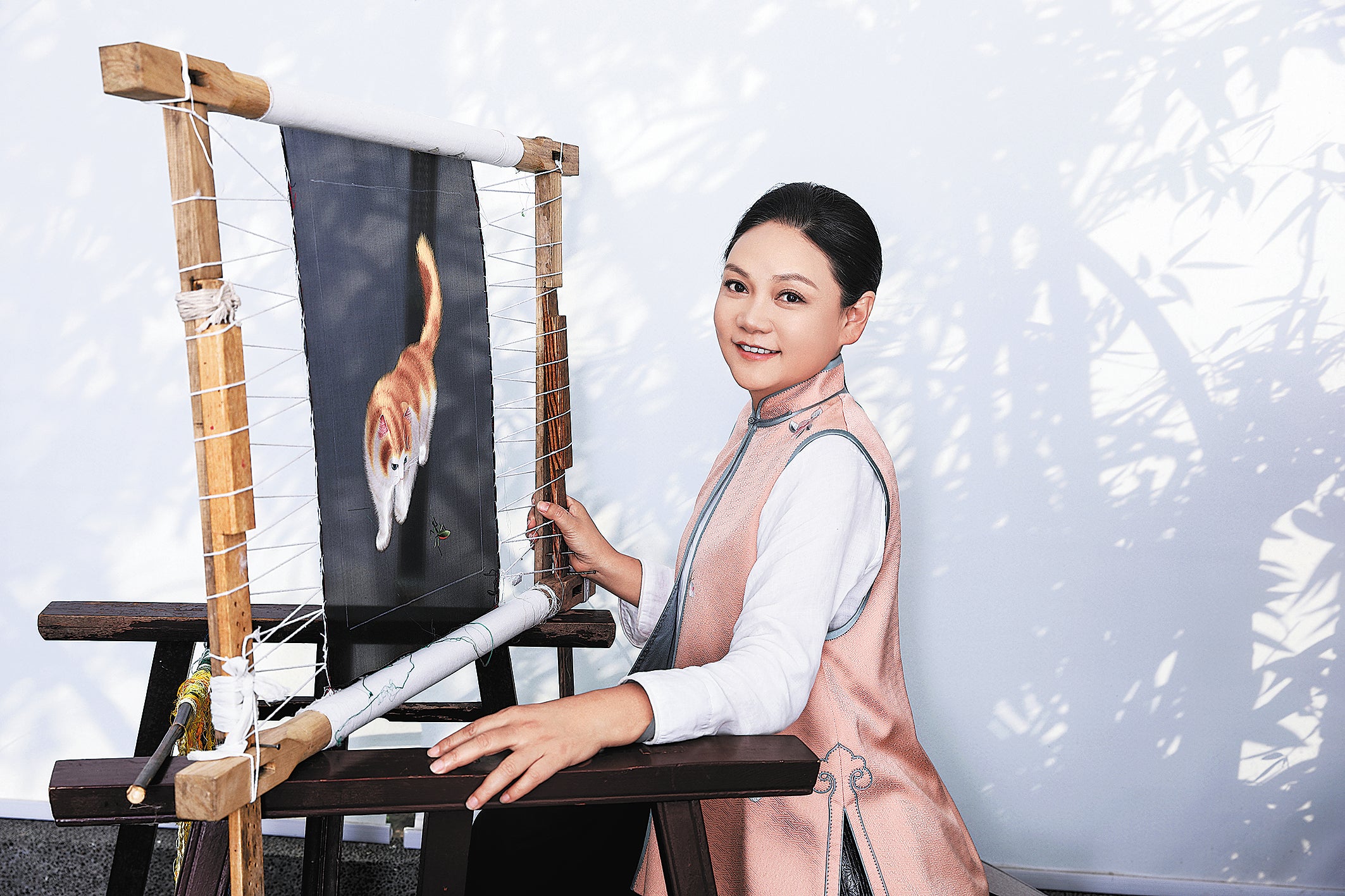Following the patterns of history
THE ARTICLES ON THESE PAGES ARE PRODUCED BY CHINA DAILY, WHICH TAKES SOLE RESPONSIBILITY FOR THE CONTENTS

“Only when I take the needle out and touch silk thread do I feel fully comfortable,” says Zou Yingzi, an inheritor of Su embroidery, an ancient craft that originates from Suzhou in Jiangsu province.
The day before the interview, Zou, 53, worked more than 10 hours late into the night on a large piece of Su embroidery. A piece stretching over 1.6 feet can take months to complete.
From Zou’s mother to her grandmothers, all the women in her family are good at needlework, particularly Su embroidery, which features intricate stitches and the creative use of silk threads dyed in various colours.
“The needle is our paint brush, and silk threads are the paint. We can express our ideas and emotions on fabric, and in doing so find peace of mind,” Zou says.
Su embroidery goes back more than 2,000 years. A piece of fabric with exquisite silk embroidery unearthed from a tomb in the area showed that the craft dates back to the Spring and Autumn Period (770-476 BC). Over centuries needlework had been a must-learn skill for women, who had to make clothes for their families. It was a tradition that mothers should make wedding clothes with exquisite embroidery for their daughters.
Zou says that when she was little her grandmother was busy every day, making wedding clothes and quilts for granddaughters. When she was 6 she started to help her mother make Su embroidery items, all of which were sold to support the family.
Her studio in Suzhou is full of her work. Flowers, cats, butterflies, figurines of Buddhist deities and scenes from nature become vivid and real on silk fabric. One can even make out a single strand of a cat’s fur. A single silk thread can be split into 16 or more strands, which in most cases are too thin to be seen. The studio provides magnifying glasses for visitors so they can better appreciate the details of Zou’s work.

Su embroidery is known for its rich colours, intricate embroidery techniques, elegant designs and clean stitches. All these characteristics, which distinguish it from other embroidery styles in China, have long been connected with the natural environment and lifestyle of Suzhou, a city with a long history of silk making and textile artisanship, says Zheng Lihong, an art professor at Soochow University in Suzhou.
“To some extent, Su embroidery is close to paintings,” Zheng says. “Many artists offered their ink paintings and calligraphy for embroiderers to re-create.”
The embroidery reached its golden age during the Song Dynasty (960-1279), incorporating elements of the literati paintings popular at the time. The craft became a favourite in the court of the Qing Dynasty (1644-1911) and was used in the tailoring of robes and decorations coveted by Chinese royalty. It was during this period that the term suxiu, Su embroidery, was coined.
“It is an art form created by women who live in a city that boasts an artistic lifestyle,” Zheng says.
Unlike Zou, whose works are more like art pieces, the works of Fu Xianghong, 59, are often made for everyday use.
Sitting in her studio in Suzhou, where large embroidery pieces of flowers, birds and animals hang on walls, she says that Su embroidery is a kind of art that decorates life. Exquisite silk cellphone bags, fan bags, clothes with Su embroidery patterns, accessories, floor screens and even furniture are among her range of products.
Fu says that because of the creativity and innovation required her work cannot be done by machines or artificial intelligence, its charm relying on the human touch.
She has a team of about 20 women who are all experienced embroiderers, and her daughter is following in her footsteps.
“For me, Su embroidery is not art confined to museums. I prefer to connect it with our everyday lives and make it more suitable for our modern lifestyle.”
